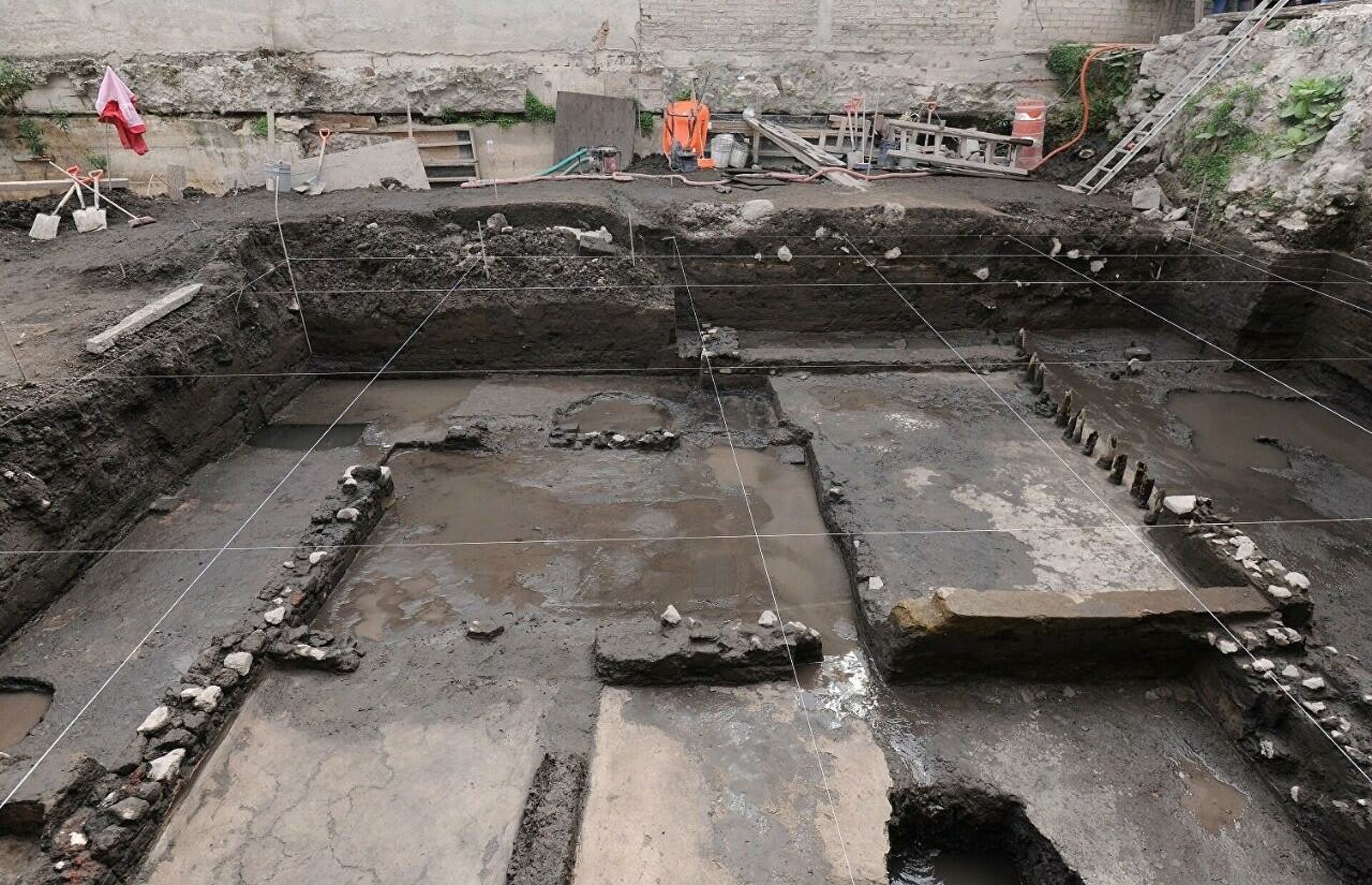Aztec Altar Secretly Built After the Spanish Conquest Discovered in Mexico City
Researchers found incense burners, a vessel containing cremated remains and other artifacts in the former capital of Tenochtitlán
Livia Gershon
Daily Correspondent
December 7, 2021

Excavators discovered the underground ritual site beneath Garibaldi Plaza, formerly part of the Aztec capital of Tenochtitlán. INAH
Archaeologists in Mexico City have found an altar dated to the decades after Spain’s 1521 conquest of the Aztec Empire’s capital, Tenochtitlán. Located in the courtyard of an Aztec home, the altar held a pot containing human ashes and was used to honor the dead, reports BBC News.
Mexico’s National Institute of Anthropology and History (INAH) announced the discovery in November after studying the site for three months. The altar dates to sometime between 1521 and 1610, when the people who lived in the house held a ritual “bear[ing] witness to the ending of a cycle of their lives and of their civilization,” according to a statement translated by BBC News.
The altar was buried about 13 feet beneath Garibaldi Plaza, a central square that regularly hosts festivals. A neighborhood of Tenochtitlán prior to Spanish conquistador Hernán Cortés’ arrival in the region, the area remained home to Aztec residents after the Spanish conquest, Reuters reports.
. . .
In the wake of the conquest, the Spanish worked to replace Indigenous religious practices with Christianity and immerse the region’s inhabitants in Spanish culture, wrote John F. Schwaller, a historian at the University at Albany, for Oxford Bibliographies in 2013. But studies of documents written in the Aztecs’ Nahuatl language, as well as Spanish-language writings by Indigenous authors, argue that the Aztecs and other Indigenous people in the area successfully preserved aspects of their cultures for centuries.
More:
https://www.smithsonianmag.com/smart-news/aztec-altar-discovered-in-mexico-city-180979166/
